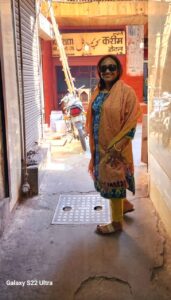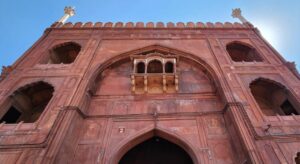Last weekend, I decided to take a heritage walk of the famous Jama Masjid in the old city, Delhi. The 2-hour walk guided by a smart, eloquent, corporate-dropout guide-cum-coach (https://www.instagram.com/10.dushyantsingh)was a fantastic experience. In my four decades of stay in this city, I have not spent much time seeing this historic city and these 2-hours inside the monument were a worthy beginning.
The walk was followed by a superbly gratifying meal at the Karim (since 1913 !!) restaurant, in a windy lane near the mosque. The whole experience made every member of the group feel extremely happy about a Sunday morning that could otherwise be quite lazy.

While I was absorbing the individual areas inside the mosque and periodically going back to ‘those days’ in my mind’s dream, I could feel the effects of human behavior, human interest, love, art, and respect for the finer aspects of life all being so amalgamated. And I thought of writing this small post.
The Jama Masjid in Delhi is primarily an example of Mughal architecture, constructed between 1644 and 1658 during the reign of Shah Jahan. He instructed the mosque’s architect, Ustad Khalilullah Khan, to design a grand and imposing structure that would reflect his vision of Islamic architecture, with elements of both Persian and Indian design. There are some elements of Rajasthani architecture incorporated into the mosque, such as the Jharokha balcony (see picture) you would see in some of the forts in Rajasthan. Another element of Indian architecture that is present in Jama Masjid is the use of Chhatris or small domed pavilions, located on the top of the mosque’s minarets. These are a common feature of Indian architecture, particularly in Rajasthani palaces and other buildings.
Shah Jahan was noted to be personally involved in the construction of the Jama Masjid, supervising the project and providing detailed instructions to the architect and builders. The mosque took six years to complete and was inaugurated in 1656.

In him, I discovered a Leader who was distinctly visionary and knew how to articulate his vision. He also made sure that he stood by and inspected the implementation phases of a grand project which he believed would stand beyond his time and life. He was not narrow in his views and decisions. Creating products of cultural fusion that would stand for centuries, was an example of bold leadership! He obviously knew the value of combining a few good things to produce an uncommon and unusual experience, even though they were from different timelines and cultures.
Tags: History, Leadership, Management, Vision
